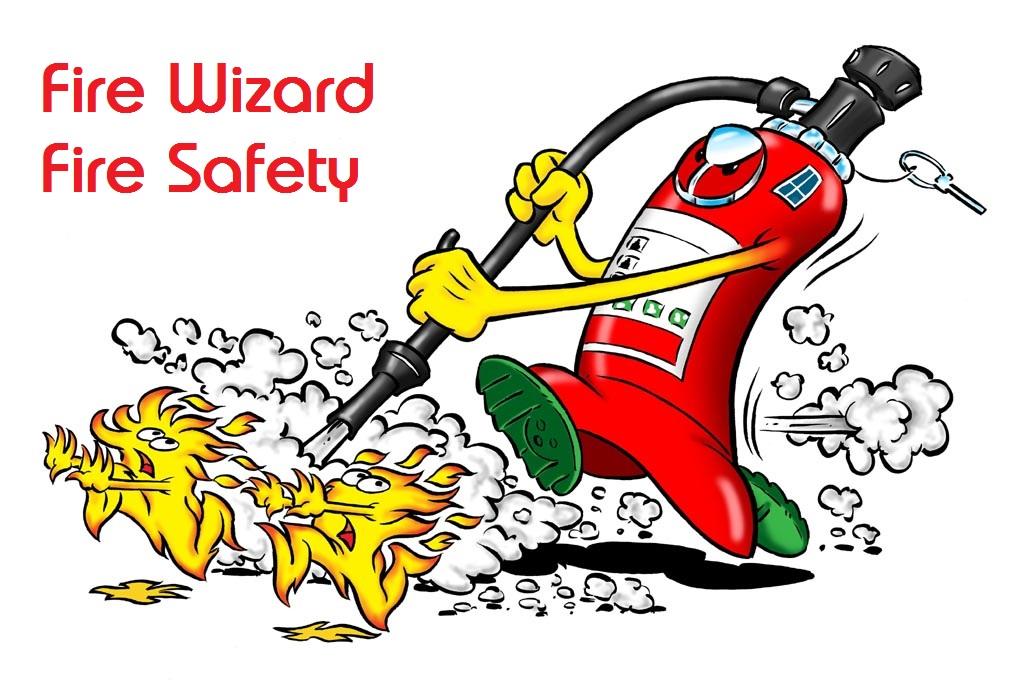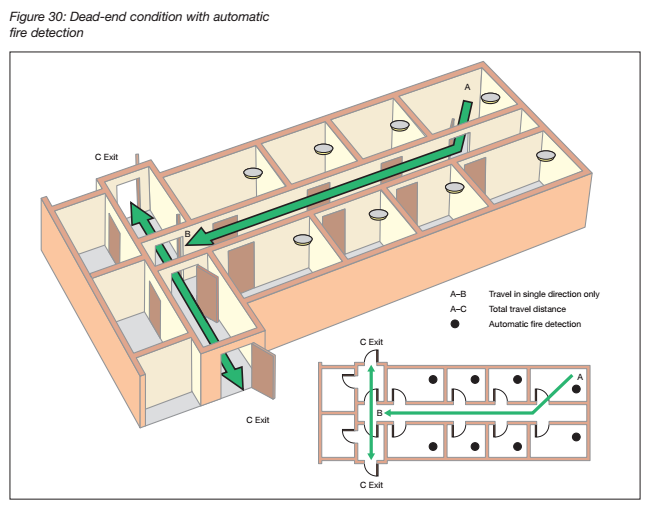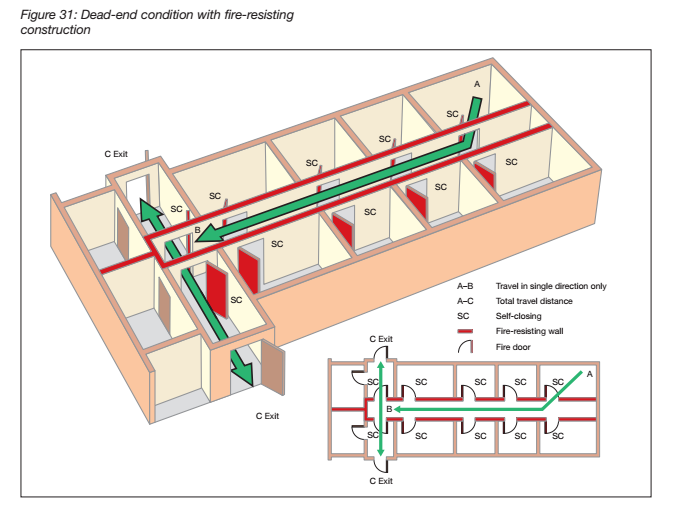-
Posts
2,707 -
Joined
-
Last visited
Everything posted by AnthonyB
-
As there is a duty to limit false alarms the likelihood of this should be low - also many suites have deadlocks for use out of hours so when the office is empty and the fire alarm goes off the premises remain secure. Life safety trumps property safety so whilst there is the ability in BS7273-4 (the standard covering the use of these locks on escape routes) to risk assess out some of the emergency release provisions it's usually where the security issue is a greater safety risk than that of fire.
-
You need no electrical fire alarm or automatic detection. Due to the size and layout of the premises your means of fire detection & warning as required by legislation is human senses (sight and smell) to detect and voice to warn. The official entry level guidance for small premises reflects this. Do not be conned into paying to provide anything extra for detection/alarm, it's not required and no real benefit to life safety (although if you really don't want to just use your voice a whistle or air horn would suit). Emergency lighting could be a torch and a single small extinguisher suitable means of fighting fire (preferably 2l foam spray or 1l water mist as powder wouldn't be advisable in such a small space). Technically you only need one exit too.
-
Grenfell was built in the 70's and complied with Building Regulations at the time (which referred to CP3 chapter lV part 1 as the standard to follow).0 It was refurbished in the mid 2000's and the alteration work (only - not the whole building) was subject to the Building Regs and the then current edition of Approved Document B. It is argued that the cladding installation complied with ADB. You can still build a high rise single stair block of flats, I've dealt with a few. This is because whilst the Building Regulations are law they only set broad functional aims. Approved Document B is not statutory and is only one way to meet the functional aims in the regulations. You can use alternative solutions as long as they can be demonstrated to give the equivalent level of safety. This could be by using BS9991 (BS9999 is not for flats, only certain commercial buildings) or a bespoke engineered solution using BS7974 fire engineering principles. One of the high rises I refer to, built in the 2000's, has a single stair with extended corridor distance and also non standard open plan flat layouts as it uses residential sprinklers to each apartment and a purpose designed mechanical smoke control system to the corridors. Building regs are not retrospective and so existing single stair high rises are perfectly acceptable, with thousands of fires in these over the decades not making the news because they stay in the flat of origin. It's very likely if the flat of fire origin occurred in a non refurbished Grenfell we may not have read about it other than in local press as you would only have the original non combustible concrete fascia.
-
Maritime rules probably differ as do different countries standards, however on the mainland UK a cartridge foam extinguisher must have the foam solution and cartridge renewed at 5 years (after testing by discharge). A cartridge's total life is 10 years after which it can no longer be refilled or used in an extinguisher. No upper limit is set for extinguisher life although some recommendations look at a 20 year service life unless physical condition or lack of parts forces an earlier retirement.
-
Assuming this is not domestic premises, flats, etc: Yes, unless it's a property protection system not intended for the preservation of life. A fire alarm system starts with manual fire warning and call points and sounders are always the starting point to meet legislation and has been the case for over 50 years. In most buildings you can stop there and you only need to add detection if there is a specific risk requiring it (e.g. inner rooms, sleeping risk, etc)
-
If you are not using the upper floor and the ground floor area isn't massive such that you can clearly hear the manual alarm throughout it then it would meet the life safety requirements of the Fire Safety Order. Automatic detection would only be needed if a fire could spread unnoticed such that it compromises escape (e.g. an inner room) and an electrical fire alarm system of linked call points, sounders and control panel would only likely be needed if you use both floors. An insurer is concerned with property protection and loss prevention, which are outside the scope of fire safety legislation (which doesn't care that much if a premises burns down as long as there are no deaths & Injuries) and their requirements have no legal force and are a contractual matter - i.e. they may decline to cover fire loss or may require excess premiums if precautions not to their requirement are not present. As it's the landlord's insurer and not yours then they should be providing any fixed installation upgrades as you are unlikely to have a lease making you responsible if you aren't also responsible for insurance.
-
The US has been heavily into halocarbons for well over 20 years with Halotron & FE-36 portables being sold as standard items for all uses, not just air. The fact that some Halocarbons such as Halotron are prohibited in the EU, plus the poor mass for mass comparative performance of other agents in portable form means that Halon substitutes in portables never took off in the general market and the specialist market that needed halon has held onto it to the last minute of the replacement deadlines, begrudgingly accepting media such as FE-36 when they couldn't hold on to halon any longer. Whilst newer developments such as Novec are well performing, their high cost,plus the fact that the non vapourising liquid halon alternatives have had 20 years to become established, means that unless something amazingly cheap & effective comes along then most of Europe will be sticking to non VL agents
-
Yes, one of the cornerstones of residential block fire safety has been to ensure residents are completely clear on the fire procedure (be it stay put, full evacuation or something in between) and are aware of key fire safety points such as not changing flat front doors, keeping common circulation areas free from storage, obstructions and ignition sources, etc. Residents being unclear of what to do has been connected with deaths in the past.
-
Most soft toys can only be surfaced wiped. In addition to soot fires generate various toxic and hazardous by products which could contaminate the toys so really renewal is the safest option - your loss adjuster should have written these off in your claim as fire damaged
-
Before 2002 it was still permissible for detection circuits to be not fire resistant as long as sounder circuits were fire resistant, although most legitimate and competent installers had been wiring all FR for years. After 2002 all new systems and any extensions or alterations to existing systems had to be in FR. An existing system need not be upgraded unless a risk assessment determines otherwise, however it keeping non FR cable it's important to have the panel in 'Short Circuit = Fire' mode - this is why the use of non FR cabling used to be allowed as in the old days panels worked on a short creating a fire signal not a fault in case the detection cabling was damaged by fire before a call point or detector was operated. A modern panel will normally as default only give a fault on short (as all cabling is expected to be FR) but most decent makes can be set to SC=F for use on older systems.
-
If you aren't near Lincoln, but are nearer Sheffield I have a few too!
-
I've answered a similar question elsewhere on here - you can if you feel competent using the guidance provided, otherwise you would need to use a suitable third party. The risk assessor as well as the responsible person can be legally liable where an FRA is not suitable and sufficient. For conversions: http://www.cieh.org/library/Knowledge/Housing/National_fire_safety_guidance_08.pdf For purpose built: http://www.local.gov.uk/web/guest/publications/-/journal_content/56/10171/3369777/PUBLICATION-TEMPLATE From https://www.gov.uk/government/collections/fire-safety-law-and-guidance-documents-for-business
-
If it's that recent you can get the flammability rating from the manufacturer and check it's OK - you may not need to remove it. It should have been addressed during the Building Control process for the conversion (assuming it was a legitimate conversion and went through a BCO or AI) as well and thus there should be a paper trail (no pun intended) for this too. The wrong paint or indeed areas with several layers of paint applied over years can be an issue too.
-

Emergency override switches (Green Box) - testing
AnthonyB replied to Meady's topic in Fire Risk Assessments
Ask which British Standard the FRA is referring to - it's not unknown for them to be quoting wrongly! The maintenance intervals is BS7273-4 will be taken as the benchmark in any legal case or audit. It is possible to have a different regime of testing, but only if it can be demonstrated that it provides an equal level of safety proportionate to the risk. Sainsburys did this with their fire alarm testing, but had to do a lot of data analysis to prove their point (helped by their detailed records, otherwise they would have been stuck.) The intervals mirror fire alarm intervals, although the weekly test there isn't of all call points, just different ones in rotation, perhaps a similar regime with your green releases would be easier to implement -
Yes. With stored pressure extinguishers you cannot 100% ensure they will work or are in safe condition just by the annual basic service. The discharge test, strip down and internal examination is the only way of detecting defects affecting safety or efficacy. Stuck gauges on leaky valves, internal corrosion, detached diptubes, etc. Also the extinguishing agent deteriorates with age and requires renewal to maintained efficacy. Before end disposal we often use 5+ year old extinguishers on training courses (where failure to operate is less of an issue and we take more than we need) and it's not as uncommon as you might think where they fail or do not perform as well as designed. The user servicable P50 range (available from Safelincs) does have the benefit of a 10 year interval between tests and you can do the annual check in house.
-
Do the premises operate a stay put policy? If so the stair widths are nowhere near as important as where you would be trying to get all occupiers down in one go. Sounds like a lack of ability to correctly risk assess in the way often associated with H&S
-
You are likely to require Building Control approval depending on a couple of factors - that process will answer your query specific to your house: https://www.labc.co.uk/your-project/homeowners/building-control-internal-alterations#buildingremoving
-
Probably coincidence. There has been no change in legislation or risk assessment guidance (other than specific guidance for premises with cladding issues). What has happened is that many housing providers have urgently reviewed their fire safety management and risk assessments and issues that crop up as a result are being addressed. It may be that your evacuation procedure has been changed as a result of your FRA so the full width is required to accommodate the evacuation of all flats as once rather than just the flat of fire origin initially, or that they deem the equipment an unacceptable ignition risk in what should be a fire/ignition sterile area.
-
As Tom says. If the Government Guides lead to an untenable situation then Fire Engineering is sometimes an option as is the correct use of BS9999 (in whole not cherry picking sections) - but the later does't always work out. I used BS9999 to try and design out installing a third stair in a conversion of a mill into offices due to excess travel distances, but the upgrading in floor fire resistance, shafts and provision of fire service rising mains associated with a BS9999 design ended up making the traditional benchmark approach easier and cheaper!
-
BS8214:2008 has been withdrawn, sadly councils are often poor at keeping up with standards even where responsible for fire safety enforcement and BS8214:2016 is the current edition. A fire door is only as good as it's frame and surrounding construction - the whole doorset must be compliant. Go to the BWF website to find a certified installer of fire doors/doorsets so you will be assured it's OK. We use Ventro for all our fire door work- http://www.ventrogroup.com/
-
If it isn't a fire escape route I don't see any reason from a fire point of view
-
A dead end is simply a corridor (or similar) where you can only go in one direction, if you go down the other end you end up against a brick wall. Either it is protected by fire doors and walls to the rooms off it or the whole area is protected by automatic fire detection
-
As Tom says BS9999 cautions against using it in FRAs in the first place (unless the property was designed and built to it) and against cherry picking which is not accepted. If the premises can meet the whole document in terms of it's design, build and management it's OK to use. You have to go by the narrowest point as if you over occupy based on the higher widths elsewhere you will get a potentially fatal pinch point (as was the case in the layout of the Station Nightclub where many of the 100 dead got stuck in a crush)
-

Do I really need to test emergency lights for three hours
AnthonyB replied to a topic in Emergency Lighting
The 1 hour/3 hour requirements are a bit of a throwback to the early days of emergency lighting when both types of fitting were available (both self contained and central battery) and technology was such that central battery systems were more common as they were the easiest way of getting 3 hours duration, self contained fittings technology was such that 1 hour was what you could easily manufacture using the technology. Therefore most applications in single stage evacuation premises would be 1 hour and the standards only asked for this as it was considered sufficient for the occupancy and risk. Technological advances soon meant that fittings could be produced with 3 hours duration that were the same size and almost same price as the old 1 hour fittings and to avoid duplication in manufacture 1 hour fittings were dropped by the majority of manufacturers several decades ago (you can still get them if you search hard). The standards however have not been updated to reflect the change in technologies available. As such virtually all fittings installed are of 3 hours duration, regardless of the minimum duration required for different Purpose Groups. BS 5266-1: 2016 has the following PPM regime: Functional operation should be checked at least every month. Testing for full rated duration should be performed on each luminaire at least annually. As the full rated duration of emergency lighting fittings is now almost universally 3 hours, as it is so long since 1 hour units were widely available and used, then it is correct to expect full duration tests. The 6 monthly partial duration test was removed in part due to the deleterious effect on NiCad battery cell life as most systems use this technology compared to back in the late 20th century when there were a lot of lead acid battery central systems and other battery technologies and full discharge cycling is recommended for this battery type. (With Lithium Ion batteries as used in phones the opposite is actually the case) The point over loss of service during recharge times is correct, hence on weekday operation premises it's best to schedule tests for Fridays. In premises with wider hours of operation then testing should be either at times of minimal risk (low occupancy, summer, etc) or alternate testing of units should be carried out. Testing a 3 hour system for 1 hour falls outside of BS recommendations and will have a deleterious effect on fittings (eventually the safety factor will be lost as they will eventually last for less and less than 3 hours down to 1 hour) and would not normally be accepted although it can be considered on a case by case basis -
Up to risk assessment - some places with similar issues use magnetic locks linked to the fire alarm in addition to the push bars. If the exit is serving less than 60 persons and there is suitable staffing to manage the fact that there would be two actions instead of one to open the door then it's not impossible to justify. Consideration should be given to whether the risk to the absconder from their ease of escape is greater than the risk from the exit no longer being panic proof and that in any case the risk from the latter is not itself intolerable.



